What to Visit
Ashokan Pillar
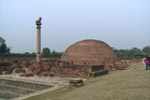
Emperor Ashoka built The Lion Pillar at Kolhua. It is made of a highly polished single piece of red sandstone, surmounted by a bell shaped capital, 18.3 m high. A life-size figure of a lion is placed on top of the pillar. There is a small tank here known as Ramkund. This pillar beside a brick stupa at Kolhua commemorates Buddha's last sermon.
Abhiskek Pushkarn (Coronation tank)
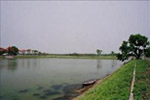
It contains water that was believed to be sacred in the old days. All of Vaishali's elected representative were anointed here before their swearing in. The Lichchavi stupa was located near here.
Shanti Stupa

Situated next to the coronation tank is the World Peace Pagoda. This symbol of world peace was constructed by Japanese Buddhists in 1996 and is only one of several that have been erected in various parts of the world.
Raja Vishal ka Garh
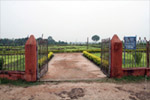
A huge mound with a circumference about one Kilometer and walls nearly 2 m high with a 43m wide moat around them, is said to be the ancient parliament house. Over seven thousand representatives of the federal assembly gathered here to legislate and discuss the problems of the day.
Vaishali Museum
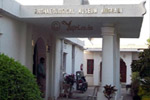
Vaishali museum was established by Archaeological Survey of India in 1971 to preserve and display the antiquities found during exploration and excavation of sites associated with ancient Vaishali which was one of the oldest and largest cities of India in early historical period.
Kesaria
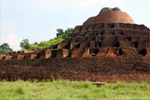
Ancient Kesariya was called Kesaputta and was a republic ruled by Kalamas, which was later annexed by its monarchical neighbour Kosala. Alara Kalama, the teacher of Buddha before enlightenment, is said to belong to Kesaputta. Buddha is also said to have had direct connection with Kesaputta. According to Jataka stories Buddha ruled this place as a Chakravartin Raja in his previous birth. Similarly, it was during one of his visits to Kesaputta that Buddha gave one of his most important discourses, the celebrated Kessaputtiya Sutta, popularly known as Kalama Sutta. Kesariya stupa is believed to have been built to honor the place where Buddha had spent the last days of his journey, before attaining Nirvana. It is said that on his last journey to Pawa, Buddha handed over his begging bowl to the following Lichhivis, people of Vaishali and requested them to go back to Vaishali. To venerate the end life of Buddha, the Lichhivis are said to have built this stupa. While formerly, it was only a mud stupa, it gained its present structure in the Maurya, Sunga and Kushana period. Huien Tsang mentions having seen the grand Stupa in Kia-shi-po-lo (Kesariya) but it was deserted and vegetation had overgrown.
Chaumukhi Mahadev

Chaumukhi Mahadev, or Chaturmukhi Mahadev, is a historic Hindu temple located approximately 2 kilometres (1.2 mi) east of Vaishali Gadh, Bihar, India. The Temple has Shivling with four god faces, Brahma, Vishnu, Mahesh and Surya. While the construction time is unknown, it is believed to have been built during the fifth century.